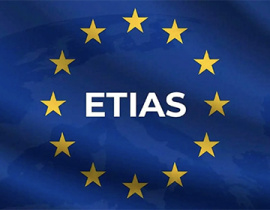- Home
- Blog
- Legislation
- EU Launches Entry/Exit System to Streamline Border Controls!
EU Launches Entry/Exit System to Streamline Border Controls!
In the world of international travel, border control systems are constantly evolving. The  European Union has officially announced the launch of its new Entry/Exit System (EES). Set to begin operations on October 12, 2025, the European Entry/Exit System will bring major changes to how visitors from non-EU countries experience border controls.
European Union has officially announced the launch of its new Entry/Exit System (EES). Set to begin operations on October 12, 2025, the European Entry/Exit System will bring major changes to how visitors from non-EU countries experience border controls.
What is Entry/Exit System (EES)?
Europe’s Entry/Exit System, or EES for short, is an automated, biometric-based visa tracking system designed to record and monitor the entry and exit of travelers from non-EU countries entering the Schengen Area.
Instead of the traditional passport stamps, this new European Entry/Exit system will securely collect personal data such as a traveler’s photograph, fingerprints, and passport details at border checkpoints. It is expected to improve the monitoring of short-term stays of up to 90 days within any 180-day period.
It’s also important to note that the EES is not a visa or a travel permit, unlike the ETIAS travel authorization. So, if you are asking “What is biometric entry exit visa tracking system?”, we can say that it is a system designed to make border controls faster and more reliable. In other words, the main aim of this biometric entry and exit system is to increase security, prevent overstaying, and improve migration management across Europe.
When Does the Entry/Exit System Start and What Passengers Should Do?
After several postponements, the EU’s Entry/Exit System start date has now been officially confirmed as October 12, 2025. It is set to be phased in gradually this autumn and will be completed by April 9, 2026. During this six-month transition, some borders may still stamp passports manually.
However, once it is complete, nationals from countries such as the United Kingdom, the United States, Canada, Australia, and many others will be required to register their entry and exit each time they cross an external Schengen border.
So, after the EU's Entry /Exit System UK tourists will need to provide their biometric data (four fingerprints and a facial image) at automated kiosks or directly at border control points. While child ren under 12 will be exempt from providing fingerprints, passengers will be prompted on the machine’s screen to answer some brief questions about their trip.
ren under 12 will be exempt from providing fingerprints, passengers will be prompted on the machine’s screen to answer some brief questions about their trip.
The registration will be maintained at all points of entry, including airports, land borders, and sea ports. So, travelers crossing by car will be directed to drive up to a kiosk displaying their registration number, where they can submit their biometric information, operated by border staff.
In order to have a seamless experience with the European Entry/Exit System (EES), travelers should ensure that their passports are machine-readable and valid for their entire trip. It is also recommended to allow extra time for border checks during the initial phase of implementation, as registration may take longer than usual.
What are the Benefits of the European Union’s Entry/Exit system?
This biometric entry/exit visa tracking system multiple benefits, including:
- Enhancing national security by preventing illegal entries and overstaying visitors,
- Automating and speeding up border control processes through biometric verification,
- Providing real-time, accurate data on traveler movements across Europe,
- Reducing identity fraud and strengthening migration controls,
- Supporting harmonized and efficient border management across 29 Schengen countries.
Overall, the shift from traditional passport stamps to biometric registration is expected to significantly enhance oversight, reinforce migration control, and streamline border procedures across the Schengen Area.






